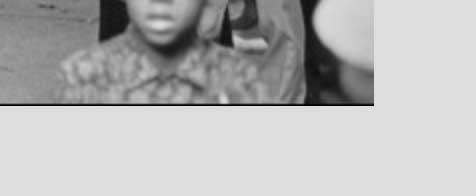Rounding strategies used in IIIF
TL:DR
Make sure you are rounding the same way across your stack (I think).
While developing Leaflet-IIIF I’ve noticed differences in the way that IIIF clients and image servers implement calculating aspect ratios. This post serves as a collection of information gathered in hopes that it can help the community steer in a collective direction.
What’s this rounding about?
The IIIF Image API is a super cool, powerful way to serve out images. A primary use of this API is serving tiled images in a standardized way so that multiple clients can use them.
A tiled image example
Here’s an example of a IIIF image that is being served out from the Stanford University Library.
To create this tiled image view, Leaflet-IIIF requests images from the image server at Stanford and then stitches them all back together. The client figures out which images it needs to request to create an optimal experience for the end user.
Requested image: https://stacks.stanford.edu/image/iiif/hg676jb4964%2F0380_796-44/0,0,5426,3820/679,/0/default.jpg
This request is asking for an image that is the full size and is scaled to 679 pixels wide. That 679 pixel width is calculated in Leaflet-IIIF and used to request a canonical url of an image.
Now this is all good so far, and the image seems to load fine but lets look closer.

There is a black line located at the bottom of the image. This black line exists because the image server is expecting to return an image of a different size than the size requested (or thought it was requested). The server then seems to fill the negative space with black pixels.
The returned image comes back as 679 pixels wide and 479 tall. The original dimensions of the image are 5426 x 3820. Requesting a scaled image of 679 pixels wide could return an image of either 478 or 479 pixels depending on how the server calculates the aspect ratio.
h2=(w2∗h1)w1
478.02801326944342=(679∗3820)5426
The image server is expecting to return an image that is appropriately scaled to the aspect ratio using a specific rounding strategy. Since an image server is only going to return an image with integer pixel dimensions it now must make a decision. Do I discard the remainder? Do I round up to the next integer? Do I round to the nearest integer? In this example the image server always rounds up to the next integer. These strategies can be consolidated to the following and are available in most standard math libraries.
| Strategy | Description | Example |
|---|---|---|
| ceil | always round up to the next integer | Math.ceil(10.001) -> 11 |
| floor | always round down to the previous integer | Math.floor(10.88) -> 10 |
| round | round to the closest integer | Math.round(10.4) -> 10, Math.round(10.6) -> 11 |
Problems these differences can present
Two separate IIIF server implementations have the potential to return a different sized image with the same request. The underlying image processing tools may also be using a different rounding implementation than the server that is returning the tile. These inconsistencies have the potential to cause unintended artifacts in the image viewing experience.
Comparisons of implementations
A non-exhaustive comparison of IIIF rounding implementations:
| Software | Rounding method | Example |
|---|---|---|
| Image API Implementation Notes | ceil | see: ws = (width - xr + s - 1) / s # +s-1 in numerator to round up |
| go-iiif | floor | /0,0,3897,4096/245,/0/default.jpg returns 245 x 257 |
| riiif | round | 0,0,4264,3248/333,/0/default.jpg returns 333 x 254 (see ImageMagick) |
| kakadu | ceil | proof thanks @jpstroop |
| openjpeg | ceil | proof thanks @jpstroop |
| loris | ceil | code reference |
| leaflet-iiif | ceil | code reference |
| openseadragon | ceil | code reference |
| iiif_s3 | ceil | code reference |
See something wrong here? Submit a PR
What should we do?
I’m not exactly sure what we should do. I would assume that at varying levels of the IIIF rounding methodologies are implemented for good reasons. Hopefully for performance reasons at the low levels. What prompted me to start looking into this was a pull request in Leaflet-IIIF aiming to resolve some of the artifacts. This PR prompted a discussion about the canonical uri syntax and what a client can expect back from a IIIF image service. It is counterintuitive that a canonical uri can return images at different sizes.
The community could work to standardize on a particular rounding method. Though the coordination and software changes/upgrades might not be worth the effort. ¯\(ツ)/¯
Hopefully this serves as a resource for others who run into this problem or want to discuss further. Relevant previous discussions: